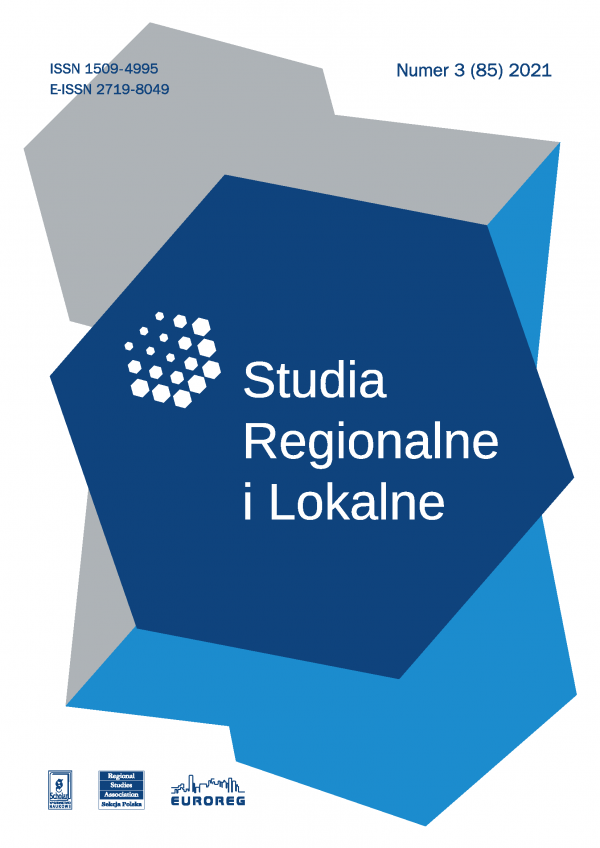Published in
3(85)/2021

- Piotr Idczak, Karol Mrozik, Ida MusiałkowskaSpatial Distribution of JESSICA Funding Across Polish Municipalities. Perspective of Territorial Dimension of EU Cohesion Policy[more]
- Agata Antczak-StępniakZombie Developments in the Polish Residential Market – Their Causes and Consequences[more]
- Bartosz CzepilThe Phenomenon of Corruption in Poland’s Local Governments after 1989 – a Literature Review[more]
- Mateusz SmolarskiReactivation of Passenger Railway Lines in Poland in 2000–2020[more]
- Krystian KolińskiTransport Exclusion of Secondary School Students in the Wągrowiec District[more]
- Anna Lis, Adrian LisRelationships Between Geographical and Virtual Proximity in Cluster Organisations[more]
- Wojciech Tomasz ModzelewskiStanisław Faliński, Współpraca międzynarodowa polskich miast i gmin (recenzja)[more]


